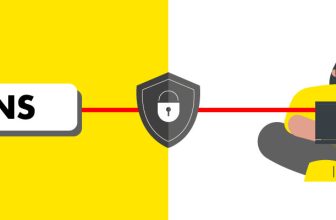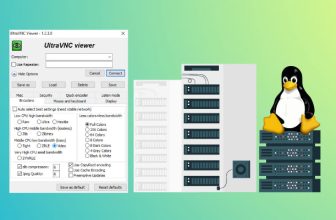Web Server and Application Server
What is a Web Server?
A web server, in the form of a software or hardware component, displays website content and stores, processes, and delivers its web pages to users when requested. The static content—files, images, videos, or HTML pages is delivered in response to the HTTP (hypertext transfer protocol) requests coming via a web browser.
A web server, in essence, is a common subset of an application. Nginx, Apache HTTP Server, and IIS are some examples of web servers.
How a Web Server Works?
A dedicated web server hosts a website’s data and code. When a user enters a URL (the address identifier of the web server) in a browser, communication occurs between the web server and the browser as the following.
- The browser finds an IP address of the server using the URL.
- It then sends the request for information (HTTP).
- The web server finds the relevant data by communicating with a database server.
- Then, it returns the requested static content in an HTTP response to the browser.
- The browser displays the information to the user.
- Web servers usually support scripting language plug-ins, such as ASP, PHP, JSP, and Perl. These enable the generation of dynamic content by the web server when needed.
Advantages of a Web Server
There are several advantages of a web server apart from its primary usage for processing and managing HTTPS/HTTP requests from the client system.
A web server provides the required information for communicating with the hosting provider.
It helps improve performance by managing the download speed for web-based applications.
It helps get permission for broken link fixing and URL construction viewing.
- A web server maintains transparency during transactions between your website and the server.
- It is flexible and can be controlled.
- It is robust, efficient, and secure; it stores and protects website data from unauthorized access.
- A web server is customizable and can help handle various applications.
What is an Application Server?
An application server, like a web server, delivers web content, however, its main function is to allow interaction between the server-side application code or business logic and user clients. It uses this business logic to work out the response of the web server. With such an interaction, it generates and delivers dynamic content, such as real-time analytics, transaction results, or decision support.
An application server’s client can be its user interface, a mobile app, or a web application. Various protocols of communication can aid in server-client interaction. A majority of application servers use HTTP as the chief protocol but support other protocols like CGI and its variants to connect with web servers. They also improve reliability and performance by allowing web applications to use load balancing, clustering, reverse proxy, and redundancy services, thus directing developers’ focus on coding rather than infrastructure.
How an Application Server Works?
A dedicated application server expands a web server’s capabilities as it supports application logic, generation of dynamic content, and integration with different resources. It provides an environment where applications for client systems can run and communicate with other software, like databases, messaging systems, etc. It modifies data more relevantly than a web server by using business logic.
- This is how the process on a website works when you try to access content:
- The browser finds the IP address of the server by using the URL.
- It then requests for information by sending an HTTP.
- The request gets transferred to the application server by the web server.
- The application server fulfills the request by applying business logic and communicating with other servers or third-party systems.
- The application server provides a new HTML page and returns it to the web server as a response, which, in turn, returns it to the browser.
- The browser then displays the data/information to the user.
- For example, on an eCommerce website, when you add items to the cart, you interact with an application server.
Advantages of an Application Server
An application server has the following benefits.
- An application server facilitates better processing and traffic optimization, allowing the web server users quicker access to content.
- It offers enhanced security with regular updates and the use of strong passwords, SSH, firewalls, secure OS, etc.
- It uses application-level load balancing for improved performance.
- It features scalability, fault tolerance, and disaster recovery to enable continuous operation of the application.
- The application server ensures data protection by setting a secure flag to convert HTTP into HTTPS, a secure version. It provides better data integrity and authentication.
- It also provides transaction assistance and centralized management through a centralized platform for deploying and managing applications.
| Aspects Compared | Web Server | Application Server |
|---|---|---|
| Tasks executed | Web servers accept simple requests and send relevant responses to them. | Application servers deliver more complex information from enterprise systems, services, and databases. |
| Protocols | Web servers mainly use HTTP but also support SMTP and FTP. | Application servers support multiple protocols apart from incorporating the web server capabilities. |
| Content types | Web servers deliver images, HTML pages, files, and videos, which are static content. | Application servers deliver personalized information, real-time updates, and customer support, which is dynamic content. |
| Multithreading | Web servers do not use multithreading. | Application servers use multithreading for concurrent request processing. |
| Container | A web server has a Web container only. | An application server has an EJB (Enterprise JavaBeans) Container besides a Web Container. |
Do web servers and application servers work together?
Practically, the line between application servers and web servers is increasingly blurring, so much so that the web browser has come up as the chosen application client with the growth in expectations of the users for web applications and their performance.
Web and application servers work hand in hand to handle client requests and provide users with accurate content. A web server receives a new request and it sends back an HTTP response if it can churn out information itself. It also checks whether the requested data is already in the cache or not.
If the web server can’t produce the user’s required content, it redirects the request to the application server, which uses business logic to process data and provides the exact information. It then sends the request back to the web server, which further passes it to the user. You can even configure application servers in certain frameworks to handle HTTP requests on their own.







